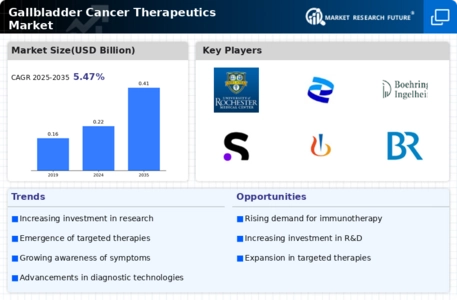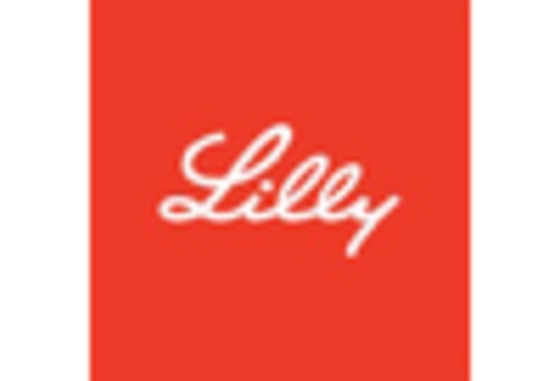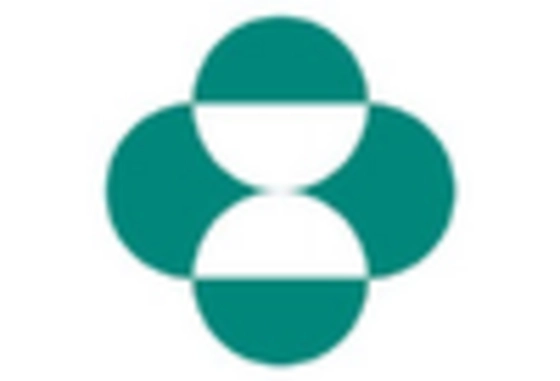Emergence of Novel Therapeutic Agents
The emergence of novel therapeutic agents is reshaping the landscape of the Gallbladder Cancer Therapeutics Market. Recent developments in drug discovery have led to the identification of new compounds that target specific molecular pathways involved in gallbladder cancer progression. These agents, including targeted therapies and immunotherapies, offer promising alternatives to traditional treatment options. The introduction of these novel therapies is likely to enhance treatment efficacy and provide patients with more personalized options. As clinical trials continue to demonstrate the potential of these agents, the market is expected to witness a shift towards more innovative treatment paradigms. This evolution not only reflects the dynamic nature of the Gallbladder Cancer Therapeutics Market but also highlights the ongoing commitment to improving patient care through scientific advancements.
Rising Incidence of Gallbladder Cancer
The increasing incidence of gallbladder cancer is a primary driver for the Gallbladder Cancer Therapeutics Market. Recent statistics indicate that gallbladder cancer rates have been on the rise, particularly in certain demographics. This trend necessitates the development of effective therapeutic options, as the disease is often diagnosed at an advanced stage, complicating treatment. The growing patient population is likely to stimulate demand for innovative therapies, including surgical interventions, chemotherapy, and emerging targeted treatments. As awareness of gallbladder cancer increases, healthcare providers are expected to prioritize research and development efforts, thereby enhancing the therapeutic landscape. This rising incidence not only underscores the urgency for effective treatment solutions but also presents opportunities for pharmaceutical companies to invest in the Gallbladder Cancer Therapeutics Market.
Growing Awareness and Education Initiatives
Growing awareness and education initiatives regarding gallbladder cancer are driving the Gallbladder Cancer Therapeutics Market. Increased public and professional awareness about the symptoms, risk factors, and treatment options is crucial for early diagnosis and intervention. Campaigns aimed at educating healthcare providers and patients are likely to lead to earlier detection, which can significantly improve treatment outcomes. As awareness grows, more individuals are likely to seek medical advice, resulting in a higher demand for therapeutic options. This trend is further supported by non-profit organizations and advocacy groups that are actively promoting education about gallbladder cancer. Consequently, the Gallbladder Cancer Therapeutics Market is expected to benefit from this heightened awareness, as it encourages timely treatment and fosters a more informed patient population.
Increased Research Funding and Collaboration
Increased research funding and collaboration among academic institutions, pharmaceutical companies, and healthcare organizations are pivotal for the Gallbladder Cancer Therapeutics Market. Governments and private entities are recognizing the need for more effective treatment options, leading to enhanced financial support for research initiatives. Collaborative efforts are fostering innovation, as multidisciplinary teams work together to explore novel therapeutic approaches. This trend is evident in the rising number of clinical trials focused on gallbladder cancer, which have increased significantly in recent years. The influx of funding and collaborative research is likely to accelerate the development of new therapies, thereby expanding the treatment options available in the Gallbladder Cancer Therapeutics Market. Such initiatives not only aim to improve patient outcomes but also contribute to a deeper understanding of the disease.
Technological Advancements in Treatment Modalities
Technological advancements in treatment modalities are significantly influencing the Gallbladder Cancer Therapeutics Market. Innovations in surgical techniques, such as minimally invasive procedures, have improved patient outcomes and reduced recovery times. Furthermore, the integration of advanced imaging technologies facilitates earlier detection and more precise treatment planning. The development of novel drug delivery systems, including nanoparticles and targeted therapies, enhances the efficacy of existing treatments. These advancements are likely to attract investment from both public and private sectors, fostering a competitive environment that encourages the introduction of new therapies. As a result, the Gallbladder Cancer Therapeutics Market is poised for growth, driven by the continuous evolution of treatment technologies that aim to improve survival rates and quality of life for patients.

















Leave a Comment